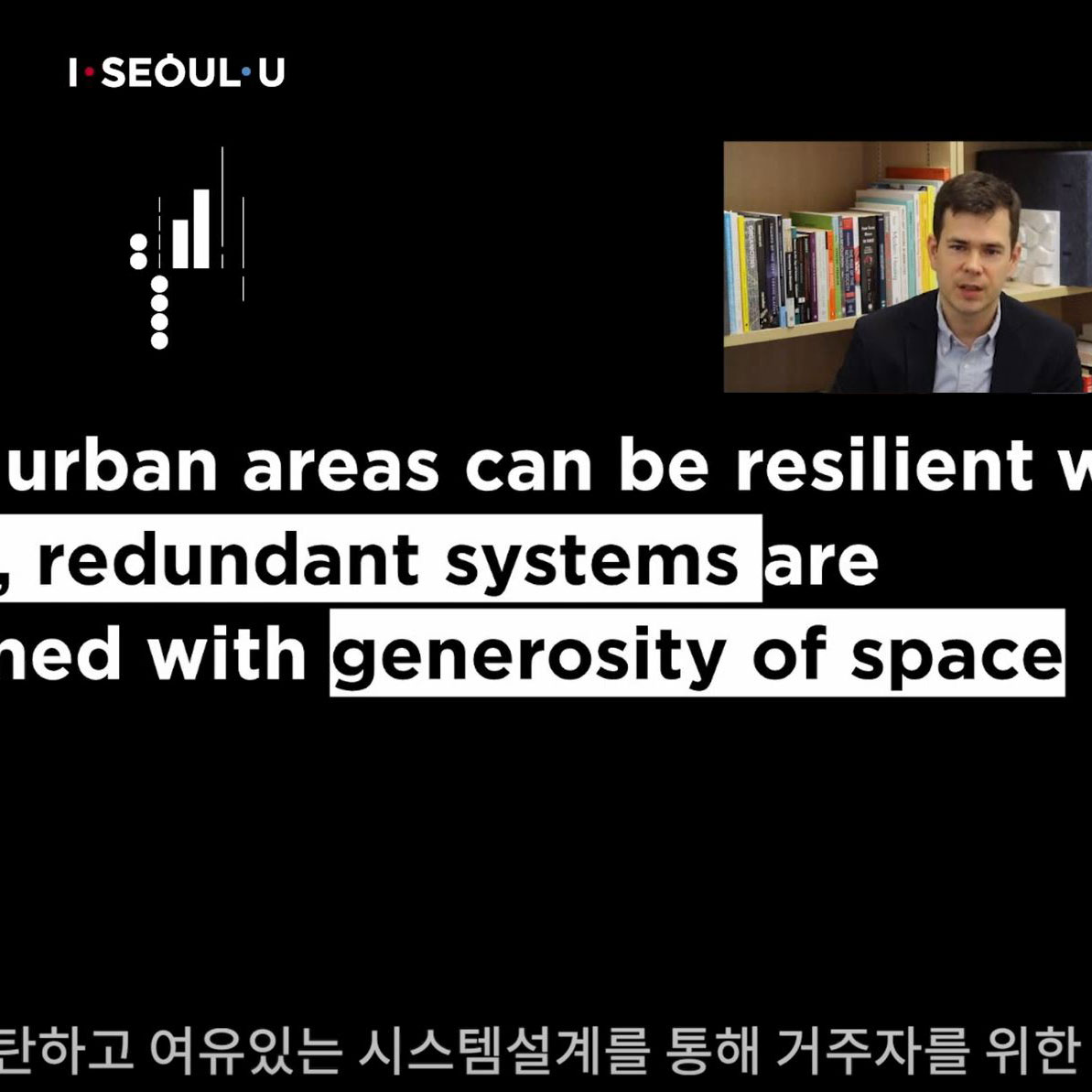I recently gave a lecture on Urban Resilience at the Seoul Biennale 2021 as part of the Global Studios Programme. I chose to reflect on the vulnerability of dense cities to shocks like the COVID19 pandemic. Recent research with Zheng Kai and Calvin Chua on pandemic resilient housing formed the basis for many of the examples I draw from Singapore. A video of the lecture is embedded below, along with an excerpt from the opening of the lecture.
Lecture excerpt:
“I believe our cities can be dense, sustainable and resilient. However, there is reason to believe that our densest cities are inherently less resilient – that is – certain forms of urban density will be more vulnerable to severe disruption in crisis events. […]
‘raising efficiency inescapably lowers resilience.’ This is the claim of systems engineer Dennis Meadows, and co-authors of the 1972 The Limits to Growth report. This claim comes from a recent article where Meadows examines some of the root causes of the COVID19 epidemic. With this statement Meadows defines a zero sum game for the 21st century: we can only fight the effects of climate change with increases in efficiency but each time we increase efficiency we make ourselves less resilient- more vulnerable to the shocks of a collapsing biosphere. So the bigger question I will ask in this lecture is, “what space of opportunity exists for our 21st century cities, if any, in tradeoffs between sustainable efficiency and resilience? […]

If we accept that raising urban efficiency inescapably lowers urban resilience, we can go on to make two claims:
- The first claim is predictive: regardless what the next external shock will be – and it seems there will be many in this century – we can make a claim about what cities or parts of cities will be least resilient: Urban systems where efficiency has been taken to an extreme, are least resilient, ie. most vulnerable to disruption. One question I have been asked to answer today is’ What external shocks could happen in my region.’ Of course I could make some guesses about this, but I would probably be wrong. However, if we could link vulnerability with types of urban development then we don’t need a crystal ball to know if we need to look out for drought, or war, or pandemic . We could assess vulnerability independent of threat and make changes accordingly. The anecdotes I will present from Singapore later in this lecture will support this point.
- The second claim is powerful in terms of the challenges and opportunity it opens for urban design and architecture: If highly efficient urban systems are vulnerable to shock, then the ability to understand tradeoffs between efficiency and resilience – with enough specificity to support planning and design – can make it possible to create cities that are both dense and resilient.

As an architect I am enticed by the proposition that we may strategically choose to subvert efficiency in order to grow resilience – as it suggests an opportunity for an architectural maximalism to come into play relative to the dual minimising influences of sustainable and economic efficiency.
This is especially the case if we refuse a definition of urban resilience that relies exclusively on robustness of our engineering, and instead also capture how our built environment contributes to the human resilience of our cities.”

Credits:
Author: Peter Ortner
SBAU 2021 GS curators: Hee-Jun SIM, Su-Jeong PARK

